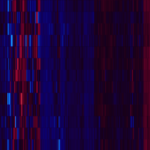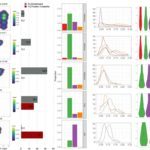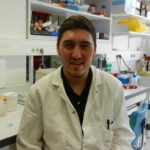Link to Pubmed [PMID] – 33021995
Link to DOI – 10.1371/journal.ppat.1008904
PLoS Pathog 2020 Oct; 16(10): e1008904
Pathogenic Leptospira spp. are the causative agents of the waterborne zoonotic disease leptospirosis. Leptospira are challenged by numerous adverse conditions, including deadly reactive oxygen species (ROS), when infecting their hosts. Withstanding ROS produced by the host innate immunity is an important strategy evolved by pathogenic Leptospira for persisting in and colonizing hosts. In L. interrogans, genes encoding defenses against ROS are repressed by the peroxide stress regulator, PerR. In this study, RNA sequencing was performed to characterize both the L. interrogans response to low and high concentrations of hydrogen peroxide and the PerR regulon. We showed that Leptospira solicit three main peroxidase machineries (catalase, cytochrome C peroxidase and peroxiredoxin) and heme to detoxify oxidants produced during peroxide stress. In addition, canonical molecular chaperones of the heat shock response and DNA repair proteins from the SOS response were required for Leptospira recovering from oxidative damage. Identification of the PerR regulon upon exposure to H2O2 allowed to define the contribution of this regulator in the oxidative stress response. This study has revealed a PerR-independent regulatory network involving other transcriptional regulators, two-component systems and sigma factors as well as non-coding RNAs that putatively orchestrate, in concert with PerR, the oxidative stress response. We have shown that PerR-regulated genes encoding a TonB-dependent transporter and a two-component system (VicKR) are involved in Leptospira tolerance to superoxide. This could represent the first defense mechanism against superoxide in L. interrogans, a bacterium lacking canonical superoxide dismutase. Our findings provide an insight into the mechanisms required by pathogenic Leptospira to overcome oxidative damage during infection-related conditions. This will participate in framing future hypothesis-driven studies to identify and decipher novel virulence mechanisms in this life-threatening pathogen.











